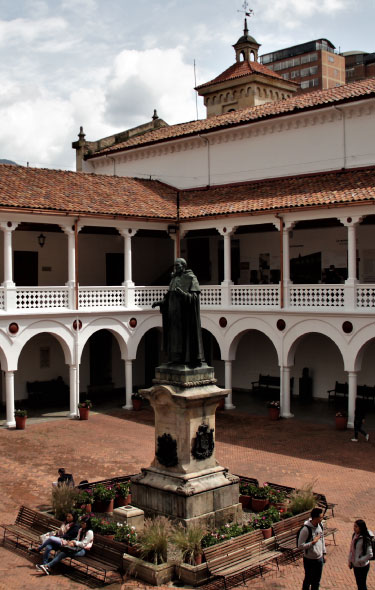The Claustro

Both the cloister and the chapel of the College are among the oldest buildings in the historic center of Bogota. It was one of the first centers of higher education in the city, a calling which it has held since its founding. The building consists of two floors around a cloister, equipped with half-pointed arches on the bottom floor, and lintel porticos on the top floor. The chapel, although part of the whole, does stand out. Its general aspect is neocolonial, with touches of eclecticism due to several restorations.
Events, traces of time
The earthquake of 1785 was the most destructive of the eighteenth century, causing damage to the chapel tower, the arch of the staircase and the rectory. This led to reconstruction work under the second rectory of Agustin Manuel de Alarcon y Castro. Later, seismic events between 1826 and 1827 damaged the roofs, both floors, the main staircase and the rectory, finally knocking down the chapel tower. For the second time in 1836, the chapel tower fell. The building was expropriated in 1860 by the Government to be used as a public jail. Then, between 1899 and 1902 during the War of a Thousand Days the College was occupied by soldiers.
At the beginning of the twentieth century the University President Rafael Maria Carrasquilla, considered the second founder of the Colegio Mayor de Nuestra Senora del Rosario, led the expansion of university facilities (the so-called new cloister) and the erection of a statue to commerate the Founder. This monument subsequently became a vital element in the identity of the building and of the Rosarista community.
Again, in 1917 an earthquake almost destroyed the headquarters of the College. The ensuing reconstruction work was entrusted to the engineer Arturo Jaramillo Concha. In 1953, the Consiliatura chooses the master Luis Alberto Acuña to undertake further restoration works in the Claustro for its third centenary.
